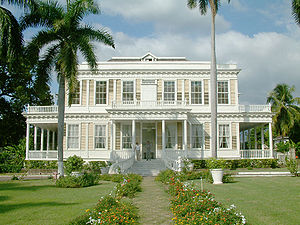Jamaican Georgian architecture
In today's world, Jamaican Georgian architecture has caught the attention of many people due to its importance and impact on various aspects of life. From its relevance in the educational field to its influence in the workplace, Jamaican Georgian architecture has aroused the interest of academics, experts and professionals from different disciplines. In this article, we will explore in detail the different facets of Jamaican Georgian architecture, analyzing its evolution over time, its implications in today's society and its projection into the future. Additionally, we will examine the opportunities and challenges that Jamaican Georgian architecture represents, as well as the possible implications it has on people's daily lives. We are about to embark on a journey of discovery and reflection about Jamaican Georgian architecture, a topic that never ceases to surprise and generate debate in the global community.
Jamaican Georgian architecture is an architectural style that was popular in Jamaica between c. 1750 and c. 1850.[1] It married the elegance of Georgian styling with functional features designed to weather Jamaica's tropical climate.[2] It was used at all levels in society, from the most important public buildings to humble domestic dwellings.
There is a related style of furniture.[3]
Many of Jamaica's railway stations were constructed in this style.[4]
-
The Court House, Mandeville, Jamaica
-
Harbour Street, Kingston, Jamaica, 1861
See also
References
- ^ The Georgian Society of Jamaica.
- ^ THE GENIUS OF DESIGN IN JAMAICA, www.jtbonline.org.
- ^ Jamaican Georgian Armchairs, www.icollector.com.
- ^ Jamaica's railway stations, Jamaica National Heritage Trust.
External links


